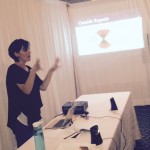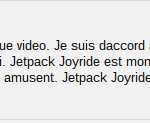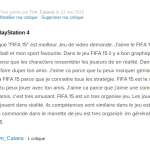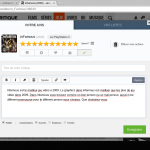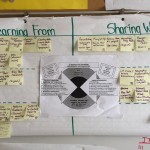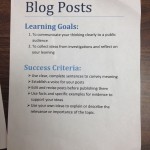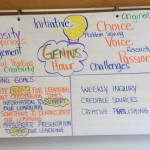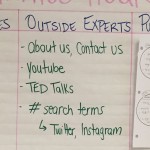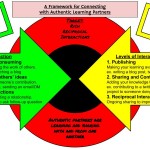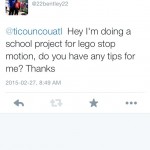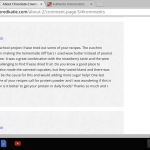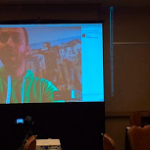In this project, we learned how to build the capacity of our students so they could confidently use technology and social media tools to connect with authentic partners, such as other learners and experts outside of the classroom.
By creating a framework for authentic interactions, students learned to identify the differences between consuming information from the Internet, compared to creating and contributing to that same venue. Armed with this knowledge, students were able to determine how best to interact with a wider audience based on their needs.
Through scaffolded teaching strategies, students learned how to have authentic interactions with experts and voices outside of the classroom in order to enhance their learning experience and extend their circle of resources beyond the walls of the classroom.
Team Members
Siobhan Shonk
Waterloo Region District School Board
Ryan Wettlaufer
Waterloo Region District School Board
Professional Learning Goals
Throughout this project, we achieved the following professional learning goals, which had a positive effect on our practice:
- we improved our competency in using social media and other online tools to connect with teaching and learning resources and partners
- we learned how to plan student learning tasks and experiences that made authentic connections outside the walls of the classroom
- we developed a framework that allowed us to conceptualize different levels of interaction when learning from and sharing with authentic partners, thus allowing us to plan and scaffold our lessons more effectively
Activities and Resources
As part of our project, we engaged in a variety of activities that contributed to our professional learning:
- we collaboratively planned lessons and student tasks
- we provided critical/objective feedback regarding each other’s teaching practice
- we co-taught technology, critical thinking and communication skills
- we shared readings and other relevant resources
We leveraged several resources to achieve our goals and execute our project, including:
- Google Hangouts
- Twitter/Instagram
- Google Apps for Education
- our school board’s Digital Learning Support staff
- other relevant digital tools and resources
Unexpected Challenges
We initially planned a book study but found that a shared, single print resource was insufficient in helping us achieve our project goals. Instead, we found it more efficient to divide up our readings, diversify our sources and then share our learning with one another.
Enhancing Student Learning and Development
Our project enhanced student learning in a number of ways:
- student engagement was increased when they were required to interact with authentic partners outside the classroom or share their learning with an authentic audience
- students increased their capacity in the effective use of a variety of digital tools to communicate, access information, create and publish
- students became more critical and inclusive in their thinking as they considered differing perspectives in more authentic contexts/interactions
Sharing
We shared our learning using several methods throughout the project. We documented some of our learning using a blog (bit.ly/authproject) and shared using twitter (@shonkmrs and @rwettlaufer). Ryan contributed to a presentation by appearing virtually at the “On the Rise: K-12″ conference and Siobhan presented aspects of our project at the Waterloo Region District School Board Learning Carousel.
Project Evaluation
We feel confident about calling our project a success. It has changed the way we plan for our students and increased the number of real-world interactions that are part of our students’ learning. The improved quality of our students’ thinking and the ways in which they communicated was also clearly observable.
In reflecting on the project, we wish that we had conducted a survey at both the beginning and end to better assess the change in student attitudes around the sources of their learning and the use of digital tools to access and connect with resources outside the physical confines of the classroom.
If the project had been longer, we would have liked to more clearly document students’ learning journeys and movement across the different levels of our Framework for Connecting with Authentic Learning Partners.
Resources Used
Pure Genius: Building a Culture of Innovation and Taking 20% Time to the Next Level – Don Wettrick
Various thoughts and resources tweeted by:
@joykerr
@AngelaMaiers
The Connected Educator: Learning and Leading in a Digital Age – Sheryl Nussbaum-Beach and Lani Ritter Hall
http://www.amazon.ca/The-Connected-Educator-Learning-Leading/dp/1935543172
Resources Created
These resources will open in your browser in a new tab, or be downloaded to your computer.



